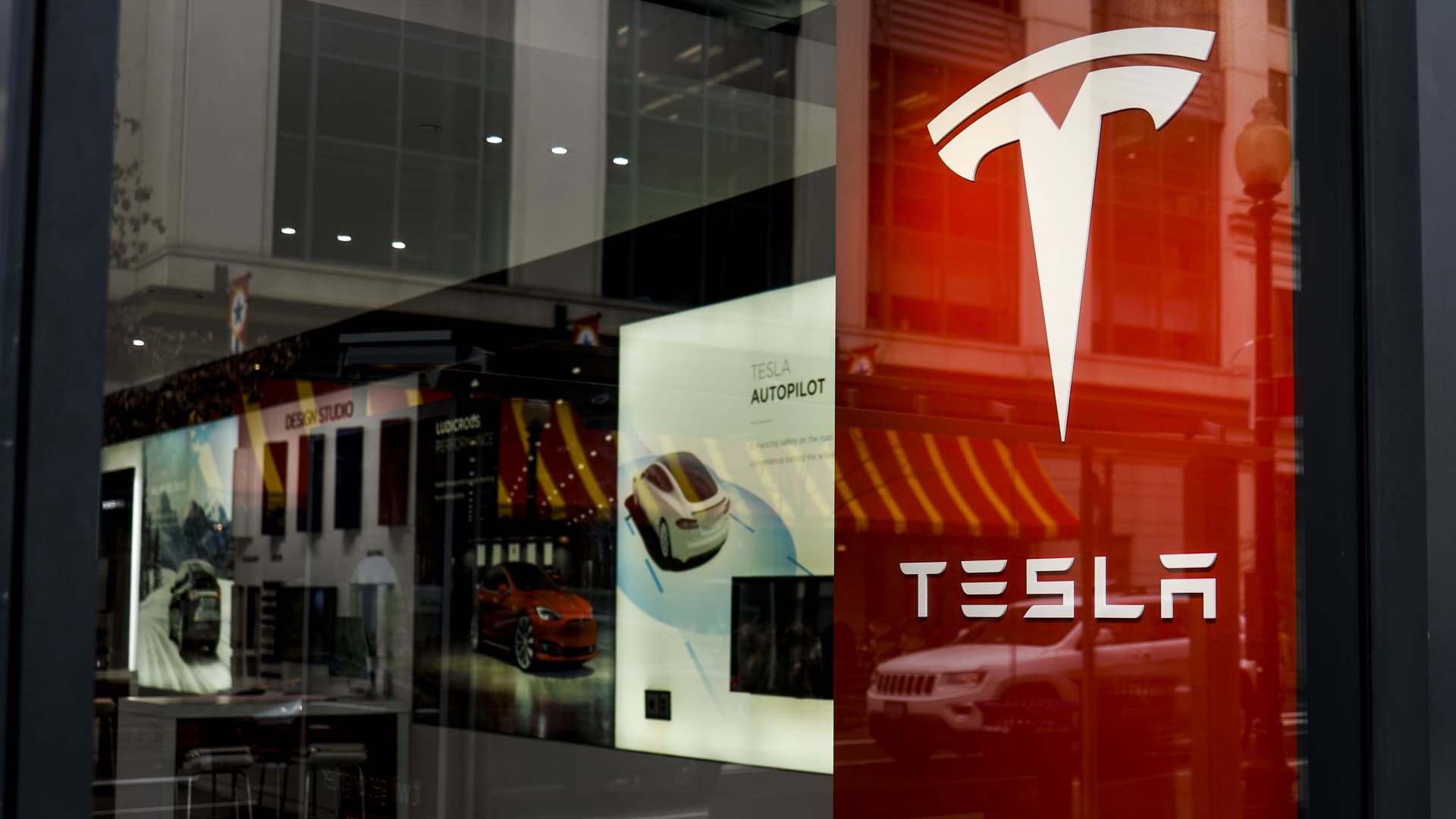The past month has been an eventful one for Tesla and Ford . Electric vehicle maker Tesla made waves as it slashed prices in a bid to stoke demand . Soon after, automaker Ford — which also now makes EVs — followed suit by cutting prices across its Mustang Mach-E model range. Both firms recently reported quarterly results. Tesla reported earnings and revenue that topped analyst projections, but Ford disappointed , with its CFO John Lawler adding that its EV business is not currently profitable. Ford’s EV sales – currently at 3.6% of its monthly total sales – have been a major focus of Wall Street. The Mach-E led Ford to become the second-bestselling automaker of EVs last year in the U.S. , albeit trailing Tesla by a wide margin. Amid talk of an EV pricing war , who will win: Tesla, or Ford? Here’s what the analysts have to say. Ford Bank of America in a Jan. 30 note called both Ford and Tesla’s decision to cut prices “odd.” “Both TSLA and Ford are citing demand that exceeds supply, which means that cutting prices would be a direct hit to the bottom line today and unnecessarily degrades future earnings power,” it said. “Based on 2023E volume targets stated by Ford for Mustang Mach E volumes, we estimate Ford would need to produce/sell about ~33% (270k= > 360k) more vehicles to maintain absolute $ profit and % op profit. If that incremental capacity doesn’t exist, then why cut price?” However, it did note that Tesla could have a near-term advantage as low-return, unprofitable EV businesses will continue to face challenges until “massive scale” is achieved. Wells Fargo in a Jan. 31 note said that Ford’s Mach E offers cheaper options compared to Tesla’s Model Y. “Ford offers more affordable add-ons to the Mach E relative to the Model Y,” it said, citing examples such as the premium paint options and hands-free driving systems. However, it was ultimately underweight on Ford, giving it a price target of $10, or 30% downside. Morgan Stanley’s Equity Analyst Adam Jonas in a Feb. 2 note said the bank sees room for Ford to improve capital efficiency. He also pointed out the cost pressure on Ford. “With rates rising at the fastest rate in recent memory, a resorption of pricing and mix may put an unusually high amount of pressure on margins. Does Ford wait for margins to fall before taking further restructuring actions or does it attempt to move ahead of the pressure?” he said. Tesla Most analysts seem to be more optimistic on Tesla at present. “Tesla has a big advantage over Ford in cars, since Tesla has 3 models, while Ford only has the Mach-e,” Louis Navellier, chief investment officer of asset manager Navellier & Associates, told CNBC Pro. However, he added that Ford has the advantage over Tesla with its electric truck F-150 Lightening; Tesla’s Cybertruck is not yet for sale. While Morgan Stanley has an overweight rating on both Tesla and Ford, it gives Tesla higher potential upside at 17%, while Ford’s is at 4.7%, according to the bank. “We believe TSLA can leverage its cost leadership in EVs to aggressively expand its user base and over time generate a higher % of revenue from recurring/high-margin software & services,” said Morgan Stanley’s Jonas. “Tesla is the only OEM [original equipment manufacturer] where EVs are not a volume zero-sum game or negative margin trade-off,” said Jefferies in a recent January note. According to FactSet, analysts on average see Ford’s share price falling around 1%. Some 41% of analysts covering the stock give it a buy rating. For Tesla, analysts have an average price target upside of 1.8%, and 65% have a buy rating on the stock. — CNBC’s Michael Bloom contributed to this report.




















































